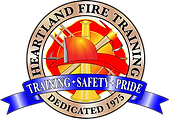
About HTF
Heartland Fire Training Joint Powers Authority
Heartland Fire Training Authority
Who We Are
The Heartland Fire Training Authority exists for the purpose of providing ongoing training for local fire departments at it’s primarily facility: the Thomas H. Owen Heartland Fire Training facility. What makes this particular training facility unique is the fact that it is funded and operated by a Joint Powers Authority, which consists of the Cities of El Cajon, La Mesa, Lemon Grove, and Santee; The Fire Protection Districts of Alpine, Bonita-Sunnyside, Lakeside, and San Miguel; The Viejas and Barona Reservation Fire Departments;



Today most of these agencies constitute the San Diego County “Central Zone” and have been working together as if there were no agency borders since the early 1970’s. These agencies routinely dispatch the closest units to a call for help regardless of the location of the incident. To make this system work efficiently these fire agencies often train together which improves coordination on all emergency incidents, this concept was the basis for the creation of the training facility.
So, one might ask, “What makes this training facility so special?” The answer to that question is that this particular facility was pioneered over 40 years ago and continues to operate successfully to this day. This very well could be one of the first practical applications of a joint venture between neighboring fire agencies nationwide.
This cooperative approach ultimately provides a benefit to the taxpayer through the sharing of resources such as Training, Apparatus, Dispatch Communication, and Purchasing, It also reduces unnecessary duplication and bureaucracy while decreasing response times and increasing efficiency.
History
On December 1, 1973, an agreement was entered into by the City of El Cajon, City of La Mesa and the Fire Protection Districts of Santee, Lakeside and Spring Valley to form a Joint Powers Authority for training. In later years the agreement was amended to change the name of Spring Valley to San Miguel as well as recognizing the incorporation of the City of Santee.

These East County agencies represented Zone 4 of the San Diego County Mutual Aid Agreement, and adopted the name of “Heartland.” Thus, we became the Heartland Fire Training Facility. The name was later changed to the Thomas H. Owen Heartland Fire Training Facility after it was dedicated to one of its founders, former El Cajon Fire Chief Tom Owen.
Governance
The Authority is governed by a Commission which is comprised of elected officials from each member jurisdiction, along with a Board of Fire Chiefs which includes each respective Fire Chief. Contract agencies are non-voting members. Zone Training Officers oversee the training components and set curriculum. The annual budget is derived from fees paid by participating agencies which are based on a formula using the number of on-duty personnel from each agency. Funds are also generated from contract agencies, the rental of the facility to other public safety agencies, and from the delivery of College Fire Science classes. Contract agencies have the ability to utilize all of the available resources but are not voting members.
Fire Service Training
Since the facility has been in existence, it has had a reputation statewide as a premier regional fire training center. It occupies close to 4 acres of land owned by the City of El Cajon next to Fire Station 9. The facility consists of a 5 story drill tower, an environmental building capable of performing “hot” fires, a pump test area, two classrooms, a computer based simulator used for command testing and training, and all of the props required by the State Fire Marshal Office to hold a variety of Heavy Rescue classes. An accredited Fire Academy is provided each year along with Community College Fire Science classes in addition to in-service training.

One example of how in-service training is accomplished is the “Color Group” method of scheduling. More than 40 engines, trucks, and paramedic ambulances use the facility at least twice a month on regularly scheduled drill days. The schedule also has a combination of day drills, night drills, and multi company-multiagency drills all of which are recommended by the National Fire Protection Association (NFPA) and the ISO evaluation service.
Color Group training. A yearly schedule provides each company access to the facility while maintaining coverage in the zone and minimizing overcrowding at the facility. This time is primarily used for single company skill maintenance and training.
Group B Training. This is generally scheduled four to five times a year and is designed to have companies from different agencies work together. Group B training also focuses on specific topics like Officer Command Training, annual Wildland refresher training, annual hazardous Materials training, etc.
Fire Academy. Every year from January to April a 540 Hour Accredited Firefighter 1 Academy is run for firefighters from participating agencies as well as open enrollees.
Ad-hoc training. Any company from a participating agency may use the facility when needed as long as there is not a scheduling conflict.
Membership
As the fire service continues to change and tools, techniques, and methods improve, look for the Thomas H. Owen Heartland Fire Training Facility Authority to continue as an innovator in Fire Service Training in a successful cooperative spirit.
The Membership and Contract Fees are based on current membership levels. The addition of other agencies prior to the execution of this agreement would result in a change in the final fees assessed.
Includes:
-
Access to the facility and all training props
-
Attendance to specialized training such as RT-130 (annual Wildland Fire Refresher), Hazardous materials, and more
-
If joining as a Member – full voting rights on all levels of working groups
-
Inclusion in multi-agency and multi-company drills for NFPA and ISO credit
-
Access to JPA training staff
-
Electronic Fire Simulations
-
Priority seating in offered classes
-
Discounted rate for students to attend the Fire Academy










